As a kid, my family had this gun we passed around. It was an ancient Stevens .22-.410, and even to this day, I didn’t realize how common that story was among people my age. The Stevens .22-.410 seems to have been a popular option for many young millennials in the South. I’m a little miffed my youngest sister ended up with the Stevens .22-.410. As a total necessity to ease the anger I have at my sister for taking it, I went out and purchased a Savage Model 42.
That’s not entirely true. In fact, I just saw a Savage Model 42 for a good price and impulse-purchased it. Admittedly, my enjoyment of the Stevens .22-.410 guided me in this direction. Who doesn’t love a good combination gun? The Savage Model 42 lacks the classic wood and blued finish of the old Stevens but provides a lighter, just as handy firearm.
What Is the Savage Model 42?
The Savage Model 42 is an over/under firearm that functions as both a rifle and a shotgun. This leads me to ask: if I want to cut the barrels, is it an SBR (short-barreled rifle) or an SBS (short-barreled shotgun)? Regardless, the Model 42 captures the essence of the Stevens .22-.410 in a much more modern design. It ditches the wood and replaces it with polymer furniture. The blued finish is gone, and we get a simple black finish.
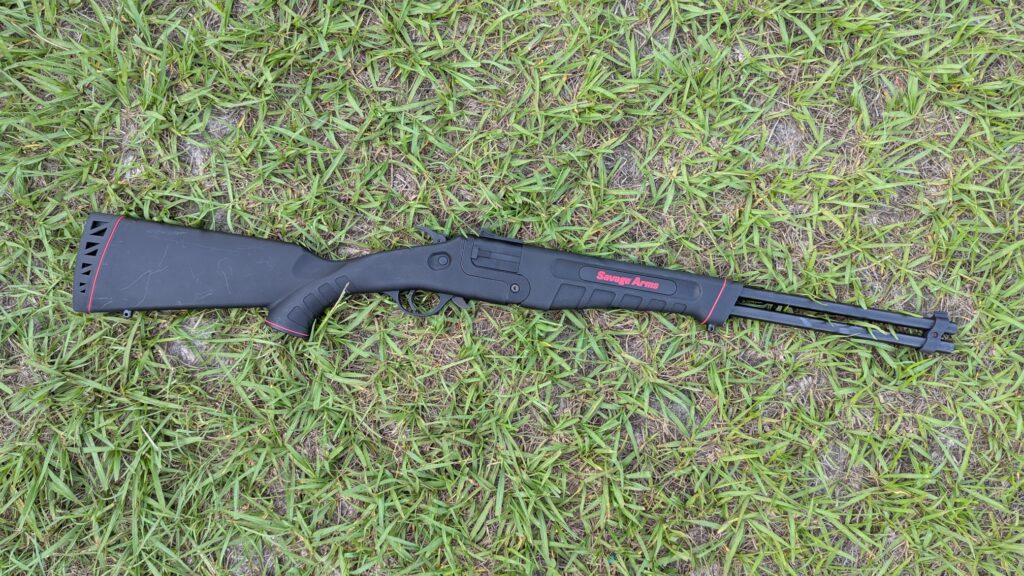
Unlike the .22-.410, the Model 42 can be equipped with an optic. A base can be mounted that replaces the adjustable rifle sights. My Model 42 fires both .22LR and .410, but there are also .22 Magnum variants. I think the .22LR is the better choice for me because I have enough .22LR in bricks to build a small home.
It bears mentioning that the Model 42 is directly related to the old Stevens .22-.410. The .22-.410 eventually became the Model 24, and Savage later bought Stevens and their designs. The Model 24 then became the Model 42 when the gun entered the modern era. The Model 42 comes in both takedown varieties and solid models.
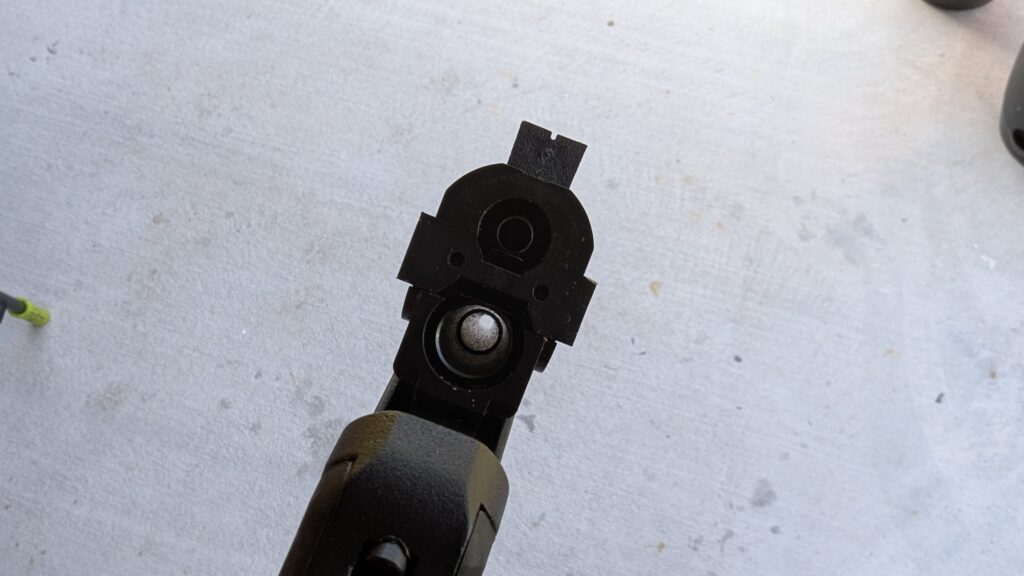
Mine is a solid model, which likely explains why I got it for such a low price point. The rigid frame, for lack of a better term, tends to be the less desirable model. The takedown version would make a great survival or pack gun due to its compact nature. The standard Model 42 is still lightweight at a little over six pounds. At 34.75 inches, the gun is small and compact and sling-ready, so it retains a bit of that handiness.
As a Working Gun
As a working gun, the Model 42 performs quite well. Its strengths are versatility and light weight. With .22LR, you can hit small game at any range that you can effectively use iron sights. With the .410 shotgun barrel, you can take medium game, and I’d be comfortable shooting hog or deer with the right buckshot load.
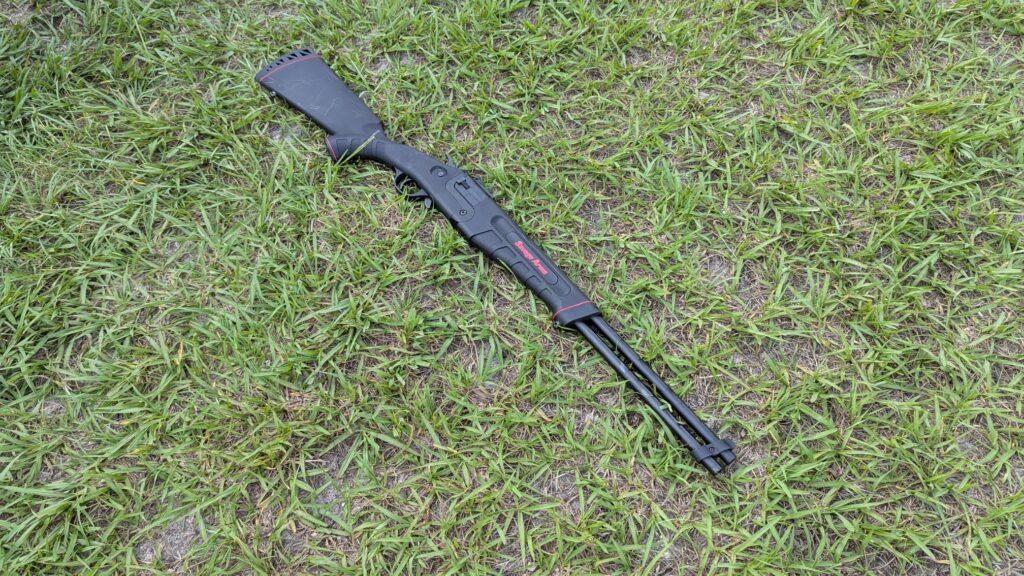
A .410 barrel also opens up various chambered barrel inserts. Rifled inserts allow you to shoot various calibers. You can fire 9mm, .38 Special, .32 S&W Long, and various other calibers from rifled adapters. Companies like Chaszel make a wide variety of rifled caliber adapters that make this a great gun for the enterprising scavenger. If we lean into that survival fantasy, we have a handy little gun that’s well-suited for scavenging the “bubba gun shops” along the countryside.
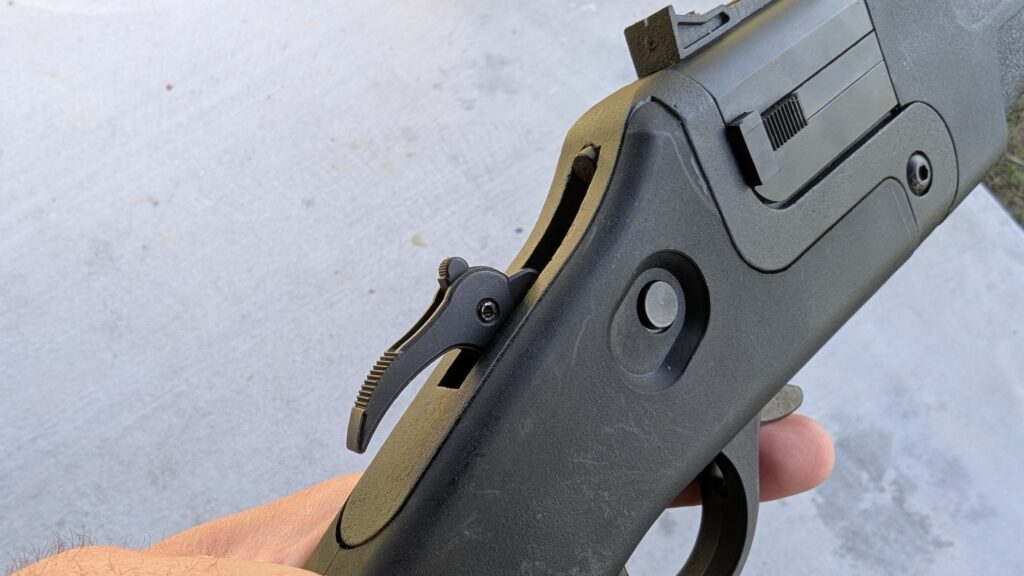
This gun offers many options and can excel at numerous tasks. For me, the Model 42 has been used for hunting rabbits and squirrels and a little light pest control. It’s a cheap, lightweight gun that’s easy to shoot and excels in a few specific tasks.
To the Range with the Model 42
The Model 42 has to be divided into its two separate barrels for a review, but both perform quite well. Let’s start with the .22LR barrel. The sights are very simple, open sights, but they are adjustable, and I chose to zero them for the rifle rather than the shotgun. I did that, and the accuracy isn’t bad within fifty yards.
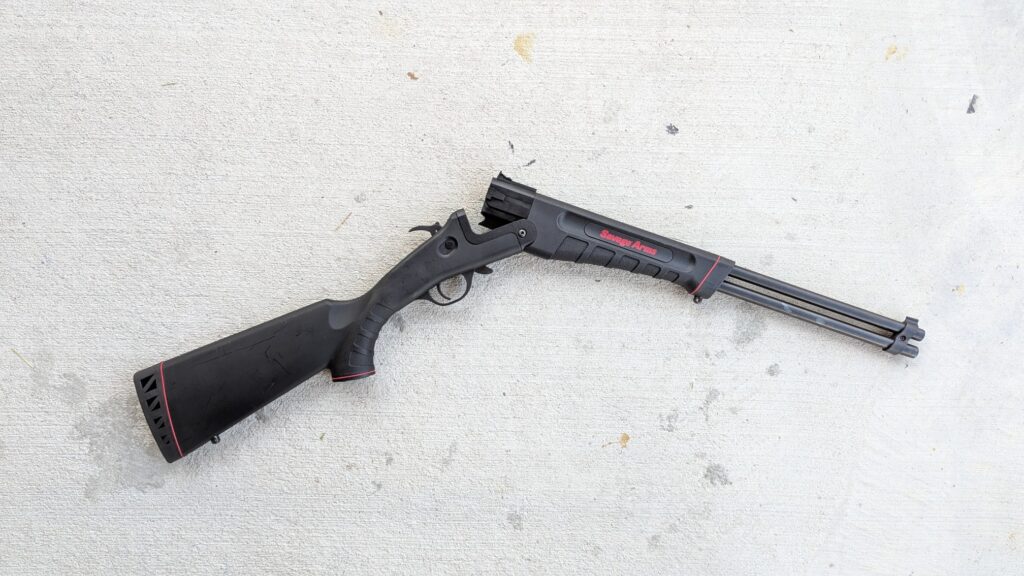
Shooting small game like rabbits and squirrels might be tough at that range with iron sights, but I can hit a six-inch gong fairly regularly with the .22LR barrel. Since this is a hammer-fired, single-action gun, the trigger isn’t bad. The hammer doesn’t have any tactile feel or audible click when it locks in place. Since it’s a single shot, you can shoot a variety of .22 rimfire rounds, including shorts, longs, long rifle, and even specialty rounds like rat shot.
An optic might clean up the accuracy, but the stock Model 42 is accurate enough for rimfire purposes.
The .410 barrel has a cylinder bore choke and works well with buckshot and birdshot, delivering predictable patterns. For medium game hunting, I’d opt for a 3-inch .410 load that packs five 000 buckshot pellets. That’s suitable for deer hunting, and even in the lightweight shotgun, the recoil isn’t bad; it’s relatively soft shooting.
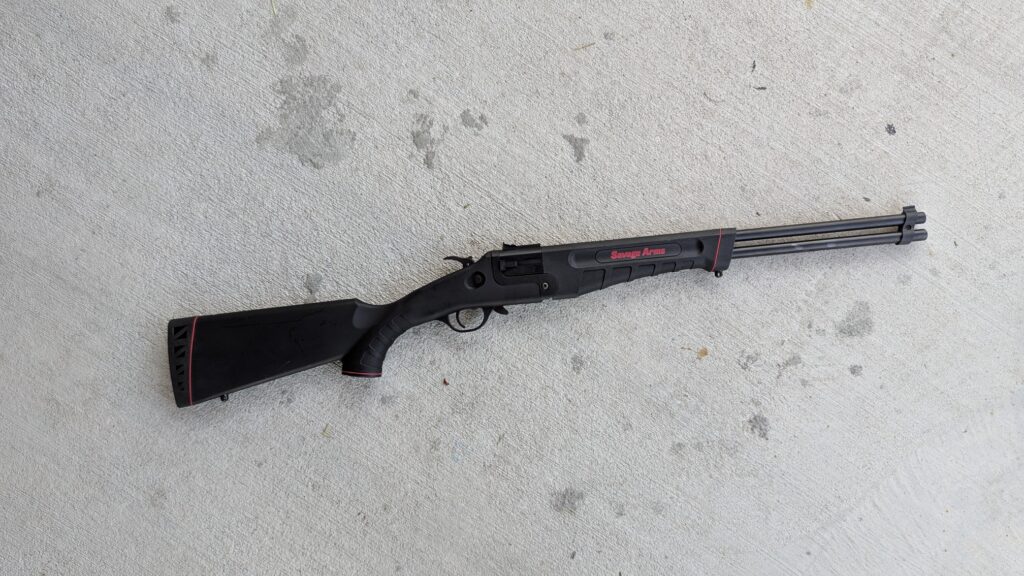
The birdshot load offers a short-range spread that makes hitting running squirrels easy and would be handy for hunting birds in a survival scenario. It also turns cottonmouths into good cottonmouths, i.e., dead ones. The .410 barrel doesn’t pattern exceptionally well, but like the .22LR barrel, it’s good enough.
Staying Ahead
The Model 42 has become my go-to for teaching kids to hunt and shoot. It’s a light and handy little gun that offers the safety of a single shot. I do lament that the length of pull is 13.87 inches, which is an adult length. It makes it a little challenging for smaller shooters, and a 12.5-inch length of pull would be perfect!
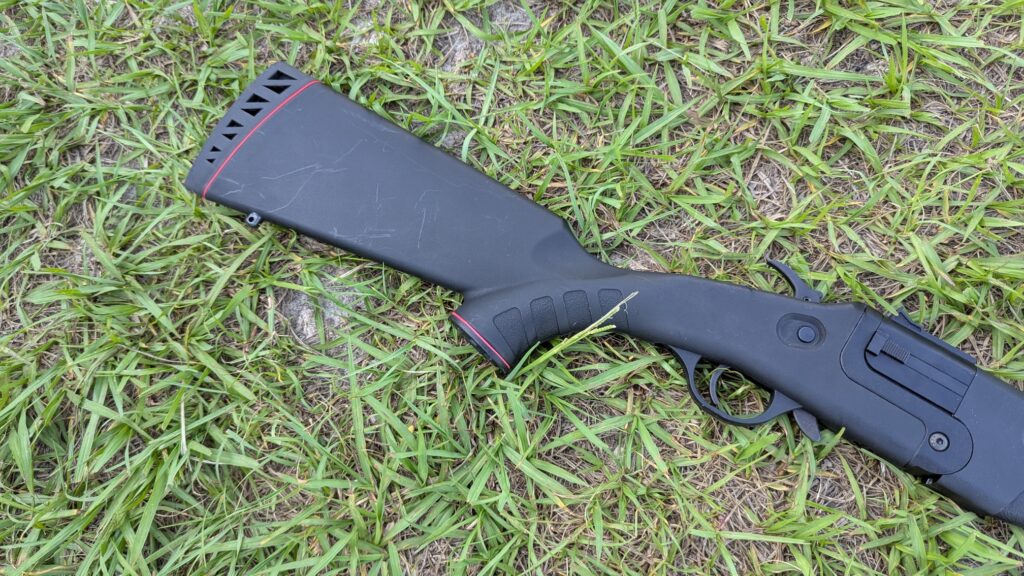
Overall, it’s not a bad gun, and it satisfies my longing for that old Stevens .22-.410. I would love to see Savage increase the size and give us a Model 410 with a .223 barrel and a 20-gauge or, preferably, a 12-gauge barrel. Until then, the Savage Model 42 will satisfy my rifle/shotgun needs.
Read the full article here











